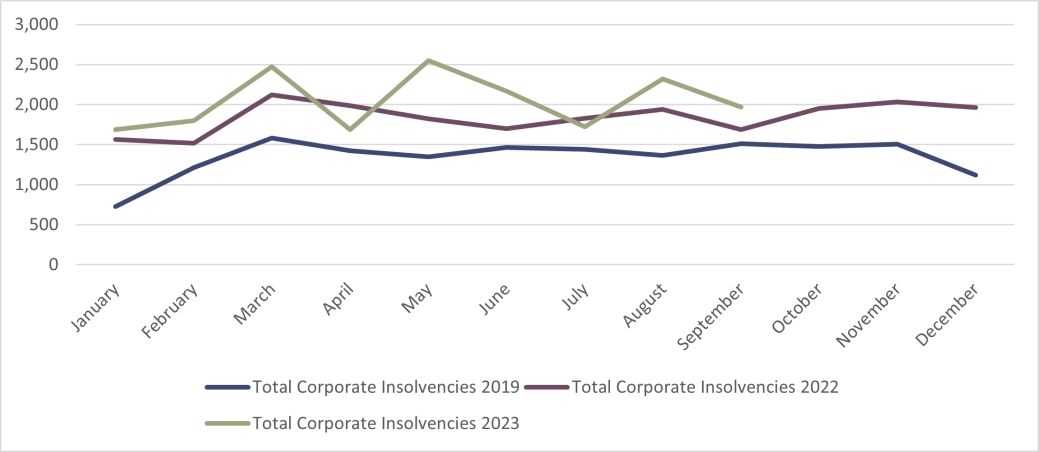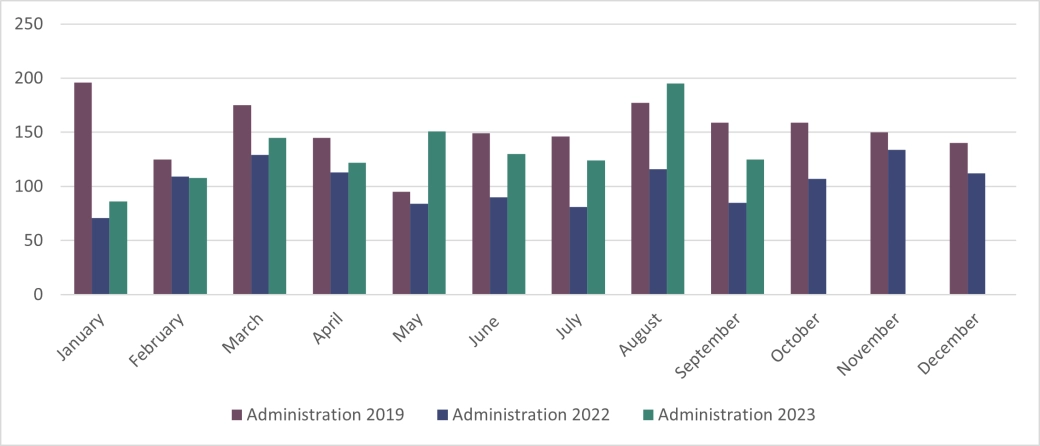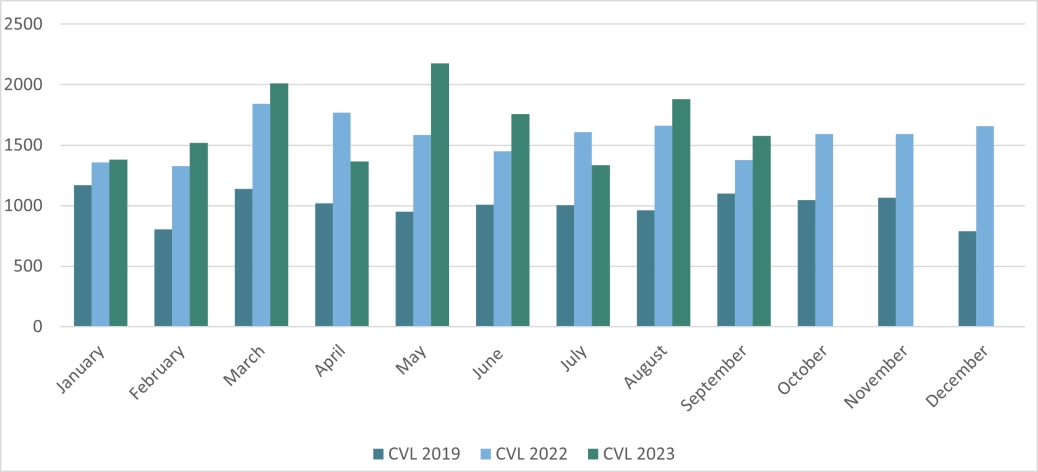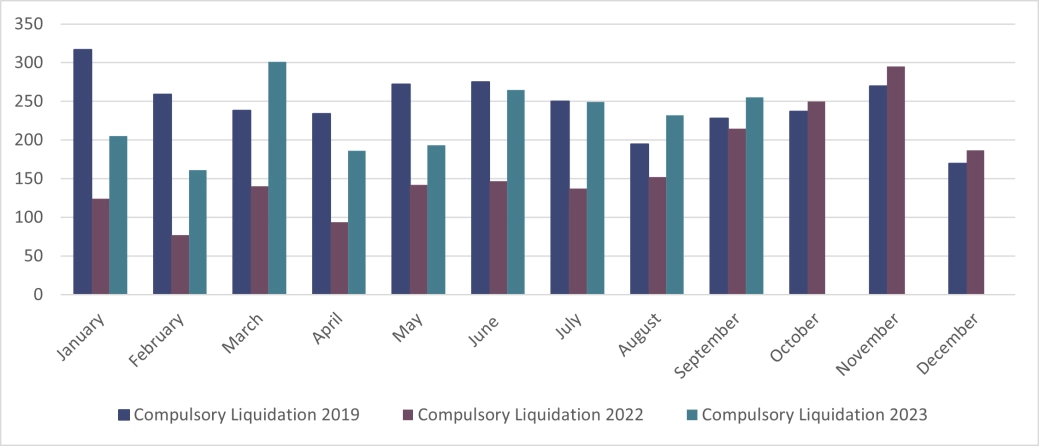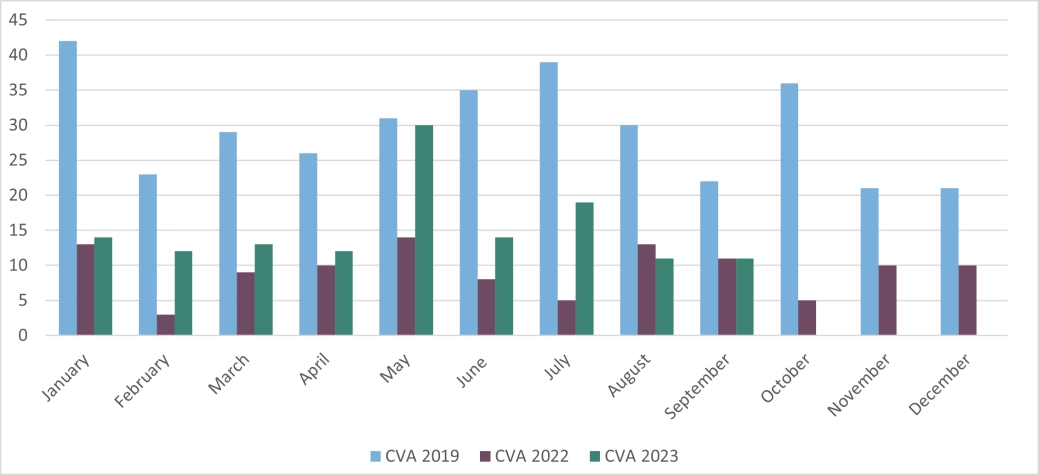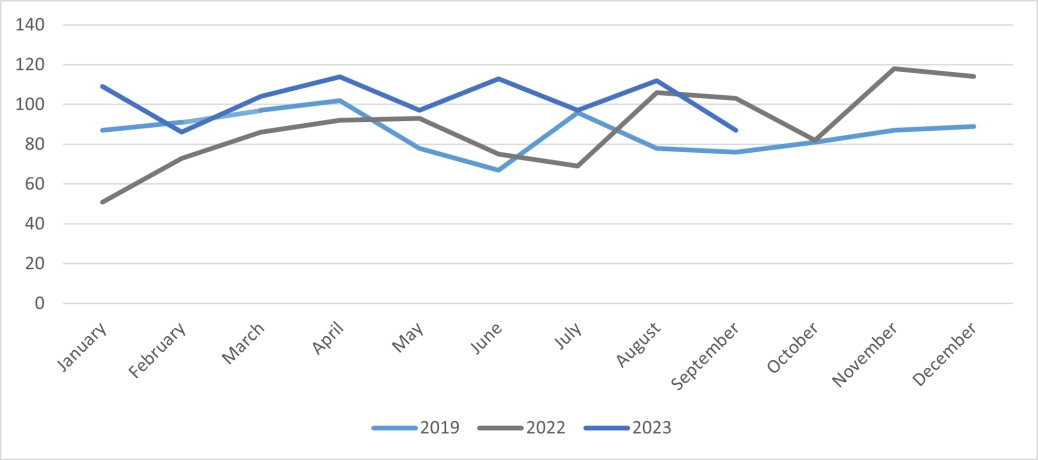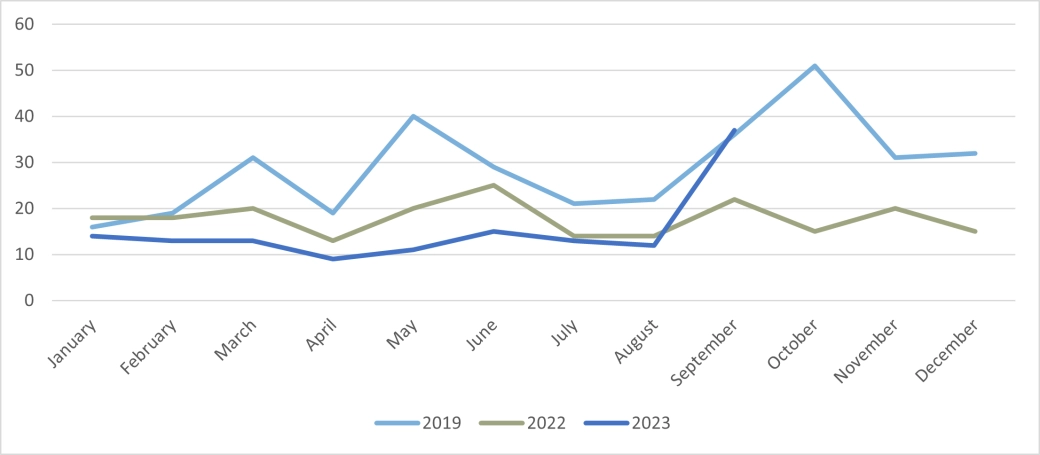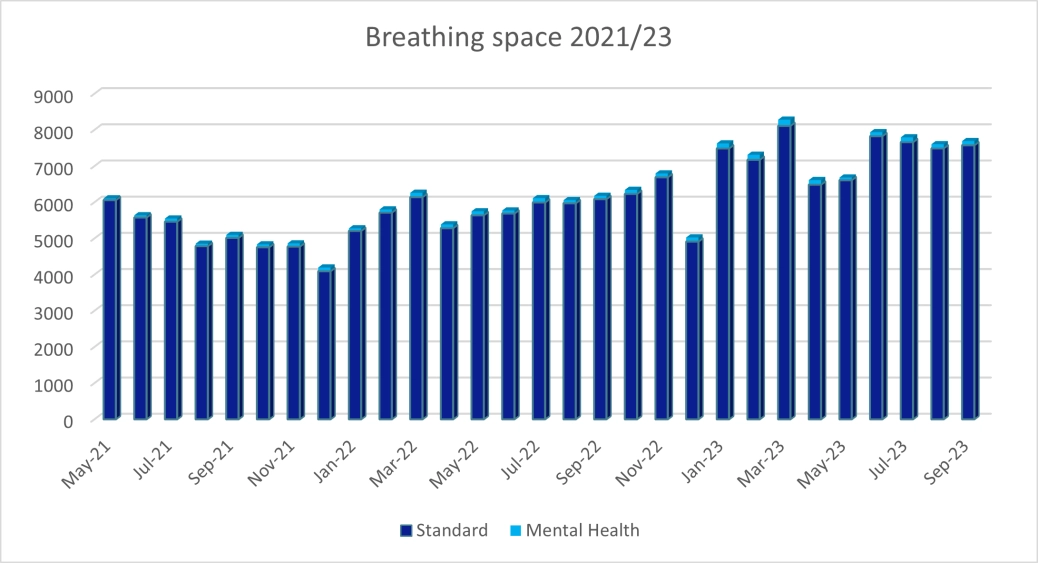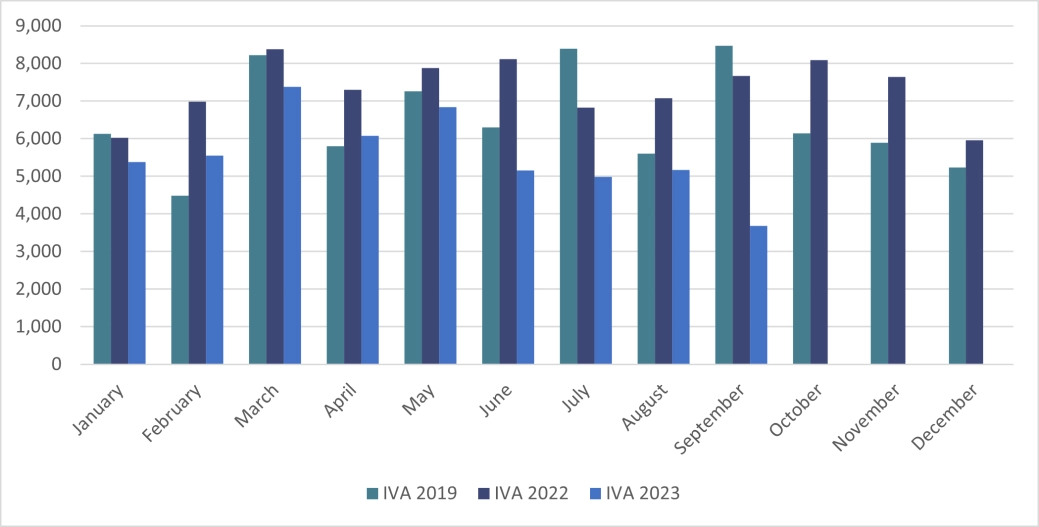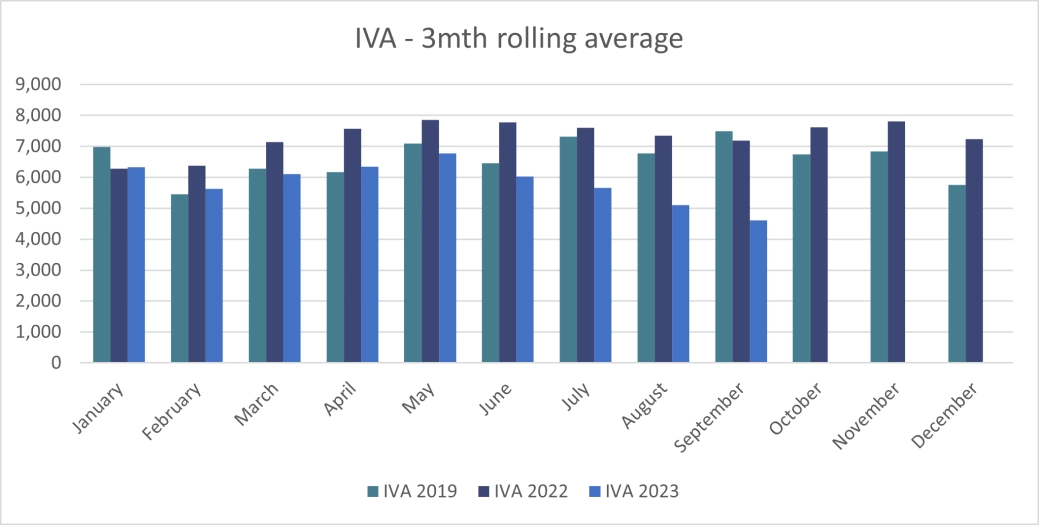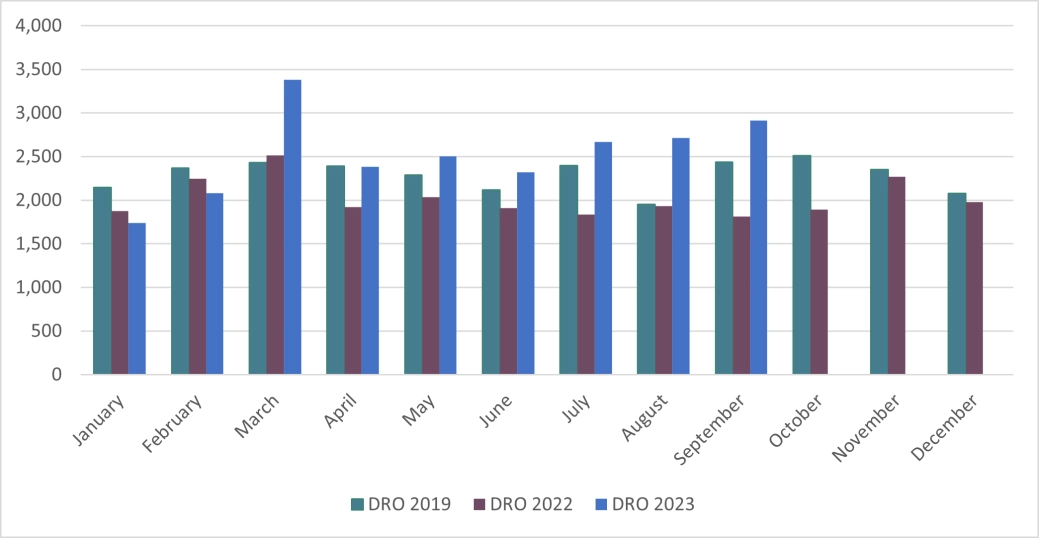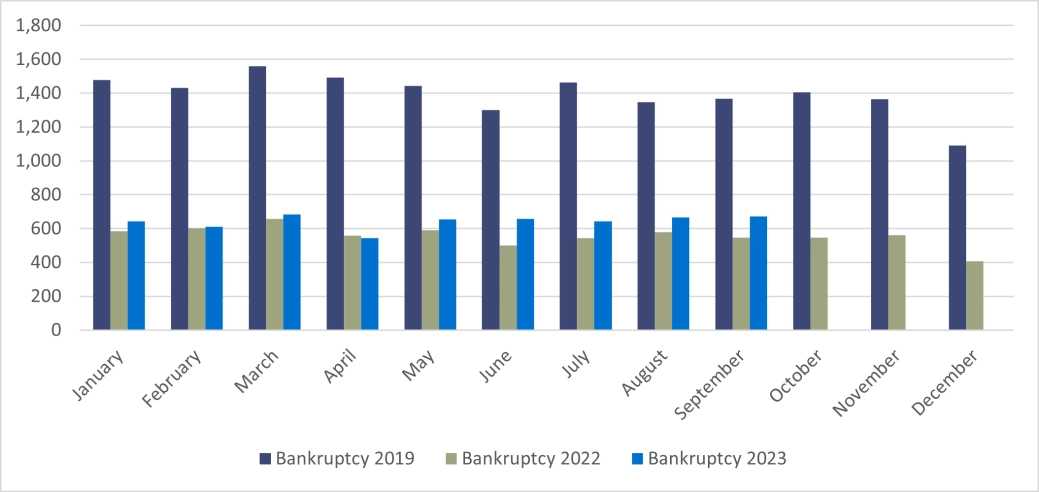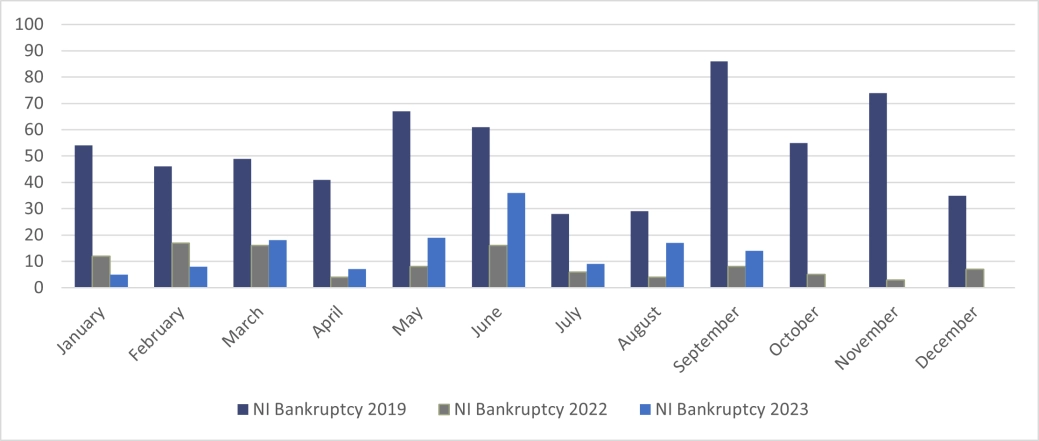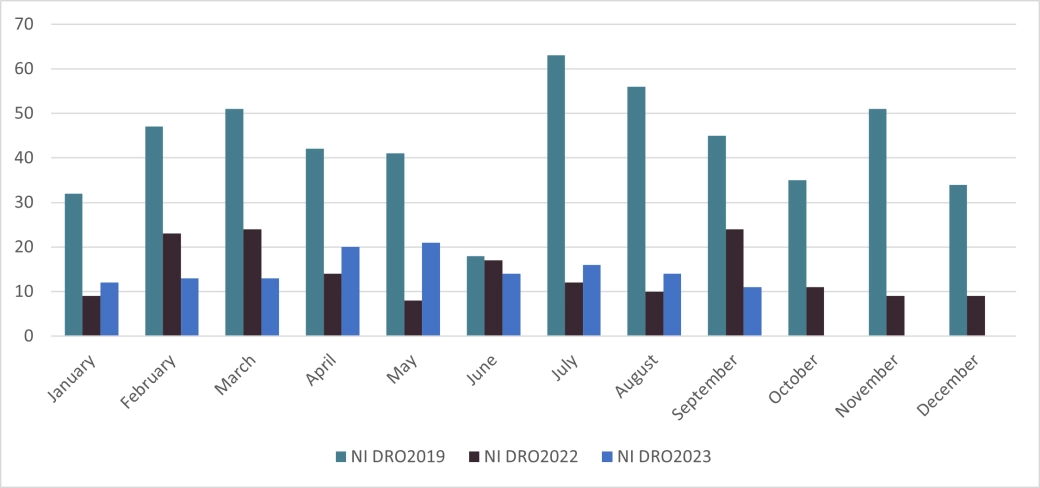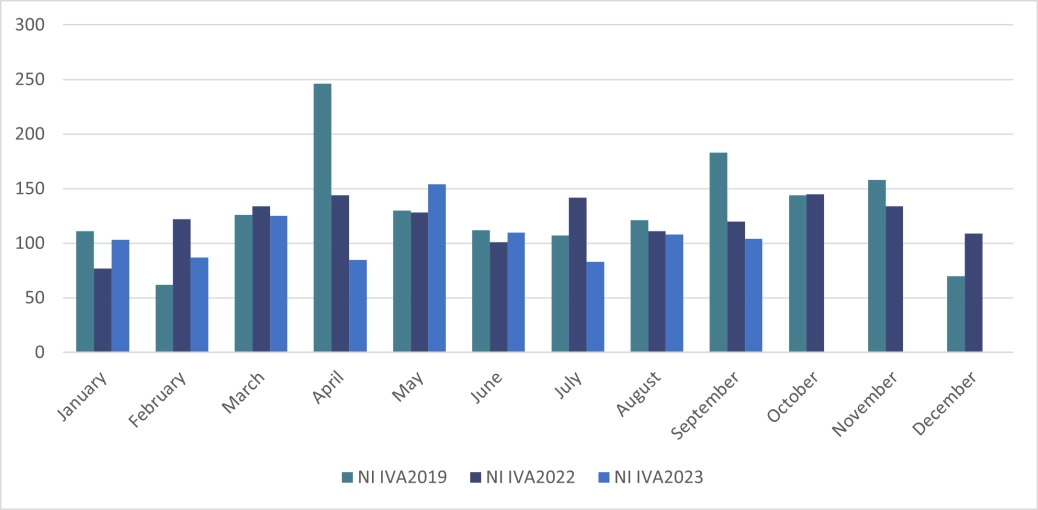
Monthly insolvency statistics – September 2023
Monthly insolvency statistics – September 2023
Corporate Insolvencies
England and Wales
Overall company insolvency numbers continue to trend well above levels seen during and in the period following the pandemic, as discussed in our analysis this summer. The effect of the current pressures on businesses is clearly visible, with the number of company insolvencies in September 2023 (1967) being 17% higher than September 2022.
August summer break tends to cause a dip in insolvency cases in September (compared to the prior month) and this has happened again in 2023; we expect to see a rebound in the October figures.
The increase in company insolvencies is predominantly driven by administrations which at 125 were 47% higher than September 2022.
In September 2023, there were 1,576 creditors voluntary liquidations (CVLs), which were 14% higher than last September.
Compulsory liquidations increased by 10% in September compared to last month and were also 19% higher than September 2022.
There were an equivalent number of CVAs (11) this September compared to last year and they have been running at that level for more than 12 months, with the exceptions of peaks in May and July 2023. CVAs have not yet returned to pre-pandemic levels, perhaps reflecting the difficulties companies have forecasting in these current uncertain times, and also the reintroduction of Crown Preference meaning that unsecured creditors are often simply out of the money in a CVA and would not therefore vote in favour (even if they also weren’t going to be in the money in a CVL). The advent of Rescue Plans will also have impacted CVAs, although as there have only been 22 of those to date since inception (and none in September 2023) these have not impacted heavily.
Scotland
In contrast to England & Wales, in September 2023, 87 company insolvencies were recorded which was 16% lower than in September 2022. This was comprised of 30 compulsory liquidations, 52 CVLs and 5 administrations. There were no receivership appointments or CVAs. In Scotland, company insolvencies peaked between September 2022 and February 2023.
Northern Ireland
Company insolvencies in Northern Ireland, at 37, were 68% higher than in September 2023 compared to September 2022. This was comprised of 25 compulsory liquidations, 9 CVLs, 1 administration and 2 CVAs.
Personal Insolvencies
England and Wales
Personal insolvency numbers have been on a steady upward curve until recently, driven by interest rates hitting a 15-year high and the cost-of-living crisis having taken effect.
However, a significant decline in Individual Voluntary Arrangements (IVA’s) has seen total individual insolvencies fall in recent months, and although registration issues may affect the current IVA numbers, the overall trend for IVA’s remains downwards.
There have been steady increases in Debt Relief Orders and Bankruptcy Orders in the same period, which have slightly offset the IVA decline.
There were 7,691 Breathing Space (BS) registrations in September, which is significantly higher than the number registered in September 2022.
With clamping down on poor advice and better signposting by the regulated debt advice sector, we expect the BS monthly figure to show a continued steady upward trend. As BS is merely a pause in the debt settlement process, it would not be surprising to also see the DRO, bankruptcy and IVA numbers rise slightly each month, once the BS period expires for these individuals.
September’s Mental Health BS application figure of 117, given the stringent entry criteria, is another significant indicator as to the nation’s wider mental health debt crisis.
There were 4,614 Individual Voluntary Arrangements (IVA’s) on average in the 3-month period to August, which is significantly lower than the three-month period ending September 2022.
The FCA have banned fees being paid to debt packaging companies, with the impact on IVAs already taking effect. There were only 3,687 Individual Voluntary Arrangements registered in September, which is significantly lower than the monthly average of around 6,300 in the previous 12 months. As better regulated advice begins to take effect, coupled with the increased BS applications, IVA numbers so far in 2023 have been notably lower than the record high numbers in 2022.
In 2019, there were 2,289 Debt Relief Orders (DRO’s) a month on average, and following the changes in entry criteria from June 2021, surprisingly they had only averaged around 2,100 per month. The September figure of 2,913 continues the steady uptick in DRO’s, probably being the option of choice to those who may previously have been incorrectly advised into an IVA.
A current DRO would have previously been a no-asset bankruptcy and therefore, the record low bankruptcy numbers of 2021/22 were of no real surprise. The average monthly bankruptcy numbers in 2019 were 1,395, made up of 1,134 debtor’s applications and 261 creditor petitions.
The stark decrease from that period to the current numbers is clear against the last 12-month averages of 597 bankruptcies, made up of an average of 476 debtor’s applications and 121 creditor petitions per month.
In September, there were 671 bankruptcies, against a 2022 average of 557 per month. We expect the bankruptcy numbers to steadily pick up, showing a more marked increase in 2024.
Bankruptcy petitions will undoubtedly have to be issued by creditors to recover debts incurred during and since the pandemic as a result of current economic pressures. In September, there were 178 creditors’ petitions, which is quite an increase on the preceding 12 months’ average of 121.
We expect to see creditor-driven bankruptcies begin to steadily increase further into 2024, led by HMRC in the recovery of unpaid tax liabilities. The volume of bankruptcy petitions will be driven by resource availability at HMRC, and by the ability of the Court system to manage the process.
Northern Ireland
In September 2023 there were 129 individual insolvencies in Northern Ireland,15% lower than in September 2022. This consisted of 104 IVAs, 11 DROs and 14 bankruptcies.

